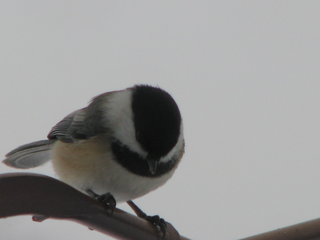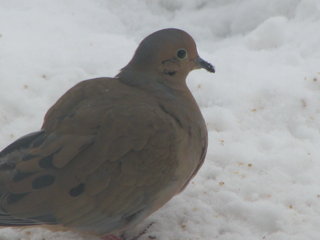
American Goldfinch. At one point, I counted more than 20 goldfinches around the feeders.
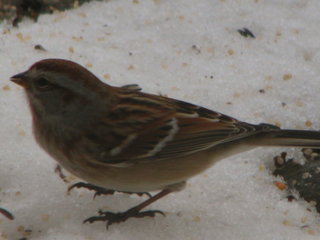
American Tree Sparrow.
Black-Capped Chickadee. Absolutely fearless. Will stay on the feeder when I step out onto the porch. Refilling the feeders is frequently accompanied by indignant chickadee commentary.
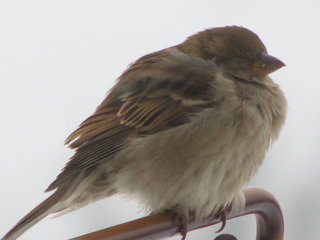
??? bi-colored bill like a Tree Sparrow, but lacks the distinctive rufous & gray head. Dreaded House Sparrow, maybe?
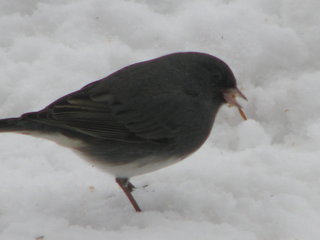

Dark-Eyed Junco (Slate, male). The thing in his beak is a freeze-dried insert larva. Almost as many of these as there are goldfinches. They don't (generally) eat from the feeders, though; preferring to scrounge seeds fallen beneath the feeders. They have a neat hop-and-2-footed-scratch routine to uncover seeds buried in the snow.
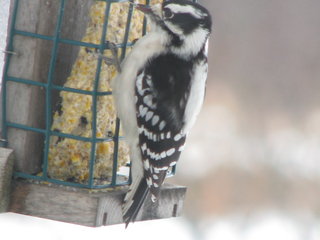

Downy Woodpecker (female).
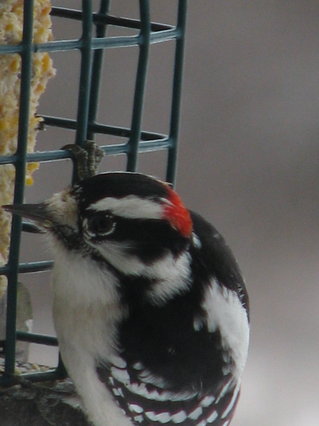
Downy Woodpecker (male -- red patch at the back of the head). I really like that beady black eye. I think he was watching me.

Downy Woodpecker (male -- red patch at the back of the head). I really like that beady black eye. I think he was watching me.
Mourning Dove. Fat waddling gentlemen, unruffled at their buffet. Unless a Blue Jay appears. I've watched 30 other birds spook from the feeders, for no apparent reason, leaving 3-6 doves calmly strolling about the grounds.
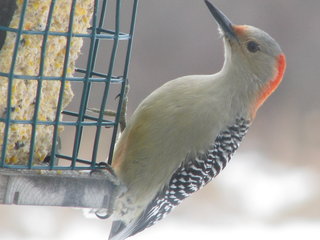
Red-Bellied Woodpecker (female -- no red patch on top of head). Note the rose-colored patch on the belly. Largest bird to appear on the feeders, yet. Strangely, also the easiest to spook. Saw bird many, many times before able to take her picture. Reacts to my movements, even only seen through window.
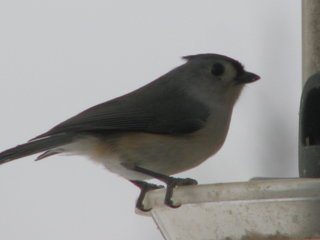

Red-Bellied Woodpecker (female -- no red patch on top of head). Note the rose-colored patch on the belly. Largest bird to appear on the feeders, yet. Strangely, also the easiest to spook. Saw bird many, many times before able to take her picture. Reacts to my movements, even only seen through window.

Tufted Titmouse. I can always tell when a Tufted Titmouse is a the seed feeder. They shell seeds against the feeder-arm. Taking a seed in its beak, a bird will perch on the arm (like the chickadee and Chippy shown above) and hammer the seed against the metal arm until it opens. This makes enough noise that I can hear it in the next room -- if the house is quiet, I can hear it upstairs.
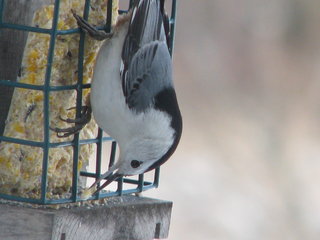

White-Breasted Nuthatch. In the characteristic head-down position. I enjoy their distinctive, "laughing" call. One the first birds I learned to recognize, and still a favorite.

